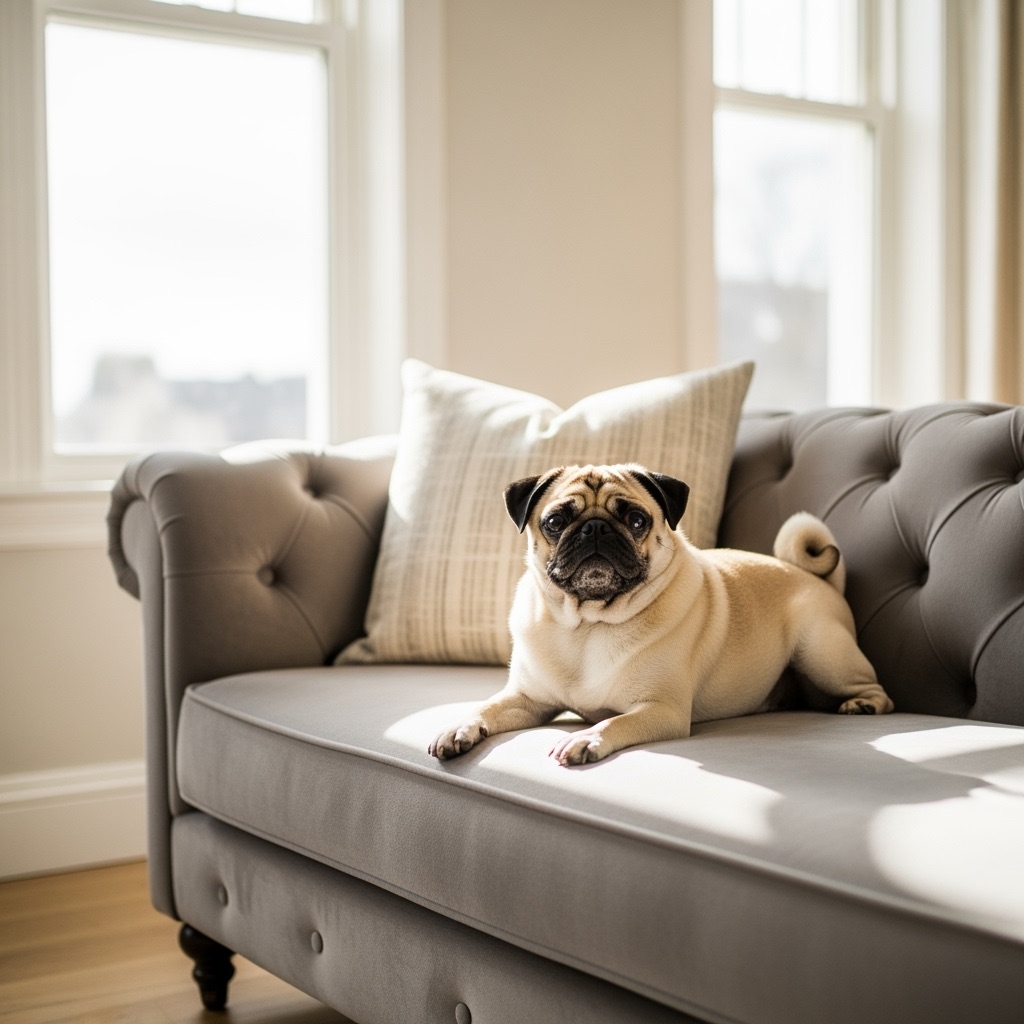Last updated on
The joy of pet ownership often collides with the reality of allergies, creating a unique challenge for millions of households worldwide. With 10-20% of the global population experiencing some form of pet allergy, finding practical solutions for peaceful coexistence becomes essential.
Fortunately, transforming your living space into an allergy-friendly environment allows families to embrace the companionship of their furry friends while keeping uncomfortable symptoms at bay.
Understanding Pet Allergies

What Causes Pet Allergies?
Despite common misconceptions, pet allergies aren’t typically triggered by fur itself. The real culprits are pet dander – those tiny, microscopic skin flakes that animals naturally shed – along with proteins found in saliva and urine. While cats and dogs are frequently blamed for allergy flare-ups, virtually any furry or feathered companion can trigger reactions. What makes these allergens particularly troublesome is their ability to remain suspended in air for extended periods, often lingering in home environments for months after the animal has moved on.
Common Symptoms and Diagnosis
When exposed to pet allergens, sufferers typically experience a constellation of symptoms – sneezing, itchy eyes, runny nose, congestion, skin rashes, and asthma-like reactions. Obtaining proper diagnosis through a healthcare professional or allergist isn’t just helpful – it’s essential for effective management. Targeted allergy testing can pinpoint specific triggers, enabling the development of tailored strategies that address your unique sensitivity profile.
Practical Strategies for Reducing Pet Allergens at Home
Cleaning and Home Maintenance Tips
The cornerstone of allergen control lies in regular cleaning routines that prevent accumulation. Vacuum frequently with HEPA-filtered devices, wash pet bedding weekly in hot water, and minimize household clutter where allergens can settle. Consider replacing wall-to-wall carpeting with hard flooring options, which don’t harbor dander and allow for more thorough cleaning. For additional protection, strategically place air purifiers with HEPA technology in bedrooms and frequently used living spaces to capture airborne particles.
Pet Grooming and Care
Weekly bathing and consistent grooming significantly reduce the amount of dander your pet releases into your home. When possible, delegate these tasks to non-allergic household members. Setting clear boundaries about where pets can roam creates important allergen-free sanctuaries for sensitive family members – particularly by limiting access to bedrooms and certain furniture.
Creating Allergen-Free Zones
Designating certain areas as pet-free zones – especially bedrooms – provides crucial respite for allergy sufferers. This separation creates safe spaces where symptoms can subside. Enhance protection by using washable covers on furniture and bedding, which simplifies allergen removal during your regular cleaning routine and creates an additional barrier between you and potential triggers.
Managing Allergies Without Giving Up Your Pet
Medical and Lifestyle Approaches
Several medical interventions can effectively manage symptoms, from antihistamines and nasal sprays to bronchodilators and allergy shots. Immunotherapy deserves special mention, as this treatment gradually desensitizes your immune system to specific allergens, potentially offering long-term relief. Working closely with an allergist helps develop a personalized treatment approach tailored to your specific situation and sensitivity level.
Real-World Scenarios and Tips
Consider the Johnson family, who nearly rehomed their beloved retriever after their daughter developed significant allergies. Instead of taking this heartbreaking step, they implemented comprehensive cleaning protocols, established strict pet-free zones, and collaborated with an allergist on medical management. Two years later, they’ve struck a comfortable balance between pet ownership and allergy control through consistent practices and clear boundaries.
Choosing the Right Tools for Allergen Control
The Role of Home Appliances
Vacuum cleaners equipped with HEPA filtration serve as frontline defenders against allergens by capturing the microscopic particles that trigger symptoms. These devices, when used regularly, significantly reduce the allergen load in your home environment. Air purifiers provide an additional layer of protection by continuously filtering indoor air, removing allergens that remain suspended.
For pet owners looking to minimize dander and hair accumulation, specialized pet vacuum cleaners can be a worthwhile investment. These models typically feature enhanced suction power and purpose-built attachments specifically designed to capture and contain pet allergens effectively.
Living Comfortably with Pets and Allergies
Creating harmony between pet ownership and allergy management isn’t about choosing one over the other – it’s about thoughtful compromise. By combining personalized medical guidance, consistent cleaning habits, and strategic home organization, most families can successfully balance health needs with the profound emotional benefits that pets bring to our lives. With dedication to these practices, it’s entirely possible to create a comfortable environment where everyone thrives – both the two-legged and four-legged members of your household.
Recap:



